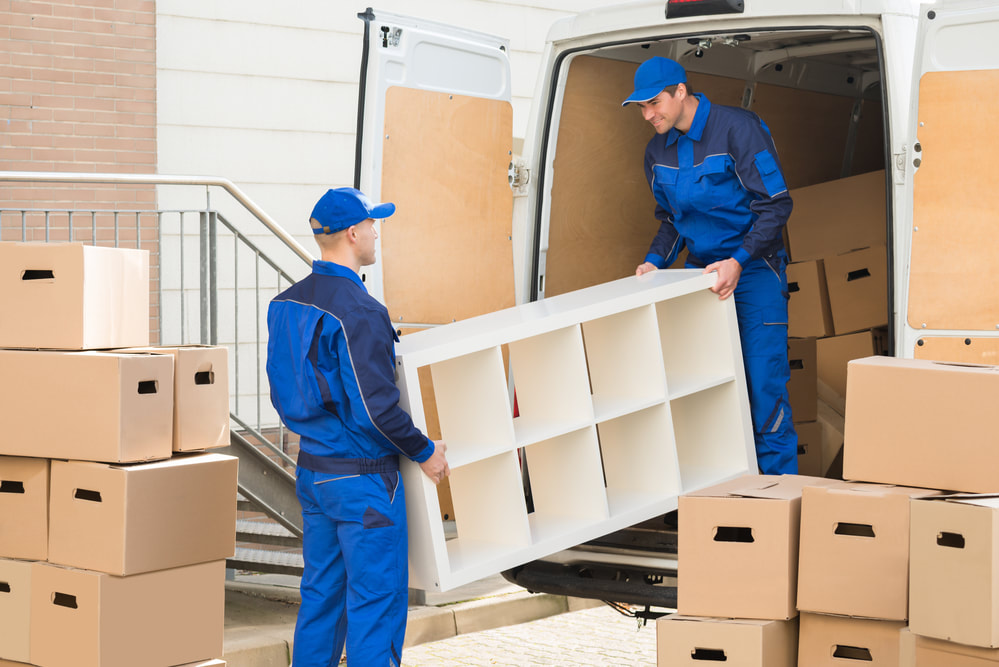Long-distance moving comes with unique challenges including packing and organizing, budgeting and costs, logistics and timing, emotional stress, and settling in. Start by categorizing and labeling your items, and pack non-essentials early. Create a detailed budget and compare moving company quotes. Book a reliable mover in advance and plan your travel around traffic and weather. Stay connected with loved ones to manage homesickness, and set up your essentials first in your new home. Engaging with your new community can also ease the adjustment. Learn more about mastering these challenges to make your move smoother and less stressful.
Packing and Organizing
Packing and organizing for long distance moves can be overwhelming if you don’t have a solid plan in place. One of the first things you should focus on is inventory management. Create a detailed list of everything you own, categorized by room or type. This way, you won’t lose track of items during the chaos of the move.
Next, prioritize packing your fragile items carefully. Use bubble wrap, packing paper, and sturdy boxes to protect your delicate belongings. Label these boxes clearly, so movers know to handle them with extra care. Don’t forget to include these fragile items in your inventory list, noting their condition before packing.
Staying organized is key to minimizing stress. Start packing non-essential items well in advance, leaving daily necessities for last. Keep your inventory list handy to make sure nothing gets left behind or lost in transit.

Budgeting and Costs
Creating a realistic moving budget helps you avoid unexpected expenses and financial stress during a long-distance move. Begin by listing all anticipated costs, including packing supplies, transportation, and labor. Don’t forget to account for hidden fees that can sneak up on you, like fuel surcharges, stair fees, or long-carry charges if movers have to transport items over a significant distance from your home to the truck.
To safeguard your belongings and prevent financial setbacks, consider investing in moving insurance. Basic coverage is typically included, but it’s often minimal. For peace of mind, you might want to purchase full-value protection, which guarantees you’ll be compensated for the actual value of any lost or damaged items.
Researching and comparing quotes from multiple moving companies can also help you stick to your budget. Look for companies with transparent pricing and good reviews. Always ask for a detailed estimate in writing to avoid any surprises.
Lastly, set aside an emergency fund for any unforeseen costs. Having a cushion will help you manage any last-minute expenses without derailing your overall budget.
Logistics and Timing
Once you’ve established your budget, it’s time to focus on the logistics and timing to guarantee a smooth long-distance move. First, you’ll need to handle transport coordination. This involves selecting a reliable moving company, confirming their availability, and making certain they’ve the necessary permits for interstate travel. Make sure to book your movers well in advance to avoid last-minute hiccups.
Next, delve into travel scheduling. Determine the exact date and time for the move, and consider factors like traffic patterns and weather conditions that could impact your journey. You should also plan for the arrival window at your new home, coordinating with your moving company to ensure they’ll arrive when you’re ready to receive them.
Don’t forget to map out your own travel arrangements. If you’re driving, plan your route and make necessary accommodations along the way. If you’re flying, book your tickets early and arrange transportation from the airport to your new home.
Effective logistics and timing are essential to avoiding unnecessary stress and delays. By coordinating transport and scheduling your travel efficiently, you’ll set yourself up for a successful and seamless moving experience.
Emotional Stress
Moving long distance can be emotionally draining as you navigate the stress of leaving familiar surroundings and adjusting to a new environment. You might find yourself dealing with homesickness and the sadness of leaving friends and family behind. It’s important to acknowledge these feelings rather than suppressing them.
Here are some steps to help you manage the emotional strain:
- Stay Connected: Make an effort to maintain relationships with friends and family. Regular phone calls, video chats, and social media can help you feel less isolated.
- Establish a Routine: Building a new routine in your new environment can help create a sense of normalcy and stability.
- Seek Support Networks: Look for local groups or online communities where you can meet new people and share your experiences.
Homesickness management is all about finding ways to stay connected with your past while embracing your present. You’re not alone in this journey; many people have faced similar challenges. Lean on your support networks and make time for self-care.
Settling In
After addressing the emotional stress, it’s time to focus on practical steps for settling into your new home. Start by unpacking essentials first—kitchen supplies, toiletries, and basic furniture. This will make your new space functional and comfortable right away. Prioritize setting up your bedroom and kitchen so you can rest and eat without hassle.
Next, embrace finding community to ease your adjustment. Introduce yourself to neighbors, join local social media groups, or attend community events. Building connections helps you feel more at home and can provide valuable local insights.
Create a routine to establish normalcy. Whether it’s a morning jog or a weekly grocery run, routines help anchor you to your new environment. Explore your new neighborhood to familiarize yourself with nearby amenities like grocery stores, parks, and public transport.
Don’t rush the process. Take time to personalize your space with familiar items from your previous home. This will make it feel uniquely yours.
Lastly, keep a list of things you need to buy or do, so you can address them systematically without feeling overwhelmed.